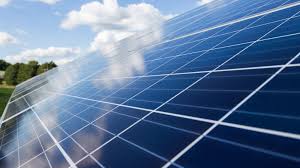
Overview
A revolutionary change has occurred in Pakistan’s rural environment due to the introduction of solar tubewells, as water scarcity is becoming an urgent issue. The design, operation, advantages, drawbacks, and wider ramifications for agricultural sustainability are all explored in this essay, which goes into great length about the solar tubewell in Pakistan.
Comprehending Solar Tubewell Technology
Traditional diesel or electric-powered tubewells can be replaced with more environmentally friendly solar tubewells. They capture solar energy with photovoltaic panels and turn it into electricity for water pumps. This technique provides a dependable and eco-friendly watering solution, especially in areas like Pakistan that receive a lot of sunlight.
Solar Tubewell Components
Solar panels
The essential component of solar tubewell systems, they collect solar radiation and transform it into electrical power. Usually, a framework is used to mount these panels, and their placement is planned to optimize solar exposure.
Inverter and Controller
The water pump is powered by the inverter, which changes the direct current (DC) generated by the solar panels into alternating current (AC). In the meantime, the controller controls the current flow of energy to guarantee peak efficiency and guard against overcharging or damage to the system.
Water Pump
Submersible and surface pumps are two of the many varieties of solar-powered water pumps available. These pumps transport water to the fields for irrigation by drawing it from subterranean sources like wells and boreholes.
Storage Tanks
To store water for usage during times of low sunshine or high demand, certain solar tubewell systems are equipped with storage tanks. This guarantees a steady flow of water for farming activities, increasing production and efficiency.
Procedure for Installation
An extensive evaluation of the site is necessary before installing a solar tubewell, taking into account elements like the amount of sunshine, the amount of water needed, and the features of the terrain. Following site selection, the following phases are usually involved in the installation process:
Site preparation includes removing any obstacles and erecting the supports needed to hang the solar panels.
Installing solar panels involves mounting and fastening them to the framework. The optimal absorption of sunlight necessitates precise alignment and direction.
Electrical wiring
Ensuring a smooth integration with the water pump system by connecting the solar panels to the controller and inverter.
Installing a water pump entails attaching it to the controller and, if necessary, connecting it to surface or submersible storage tanks.
Testing and Calibration
Carrying out comprehensive testing to guarantee the system functions effectively and adjusting settings as necessary to maximize efficiency.
Solar Tubewell Benefits
Cost Savings
By removing the need for pricey diesel or power, solar tubewells enable farmers to drastically cut their operating costs.
Environmentally friendly
By utilizing solar energy, these systems lessen their reliance on fossil fuels and carbon emissions, making the world a cleaner and greener place.
Reliable Water Supply
Solar tubewells improve agricultural production and lives by offering a steady supply of water, even in isolated locations with limited access to grid electricity.
Low Maintenance
Solar tubewells require less maintenance than diesel-powered tubewells, which leads to fewer downtimes and improved reliability.
Energy Independence
Solar tubewells enable farmers to become energy independent, minimizing their need on outside energy sources and boosting their capacity for self-sufficiency.
Obstacles and Things to Think About
Initial Investment
Installing a solar tubewell can be expensive for smallholder farmers up front, despite the significant long-term savings. Financial and subsidy accessibility can aid in resolving this issue.
Technical Expertise
Training programs and support services for farmers are crucial since proper installation, maintenance, and troubleshooting need for technical expertise.
Intermittent sunshine
Because solar tubewells rely on sunshine to produce power, they are less efficient at night or on overcast days. This problem can be lessened by implementing hybrid systems or storage solutions.
Water Management
To optimize the benefits of solar tubewells and avoid over-extraction of groundwater resources, effective water management techniques are necessary.
Policy and Regulation
To encourage the installation of solar tubewells, there must be clear policies and regulations in place. These should include requirements for sustainable water usage and incentives for investments in renewable energy.
Pakistan’s Solar Tubewell Prospects
The future of solar tubewells in Pakistan is bright, despite obstacles. Technology breakthroughs, falling solar component prices, and rising environmental consciousness are predicted to drive uptake of solar-powered irrigation. This shift can be expedited further through government initiatives, private sector involvement, and international alliances, providing food sovereignty, water security, and economic success for Pakistan’s agricultural sector.
In summary
A ray of hope for Pakistan’s pursuit of sustainable agriculture are solar tubewells. These systems provide a means of addressing water scarcity, improving agricultural output, and lessening the effects of climate change by utilizing the plentiful solar energy resources. Solar tubewells have the potential to spark a green revolution that would change Pakistan’s agricultural landscape and raise living standards for all people, provided that stakeholders work together and policies are supportive.







